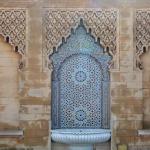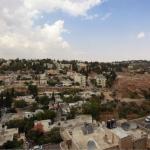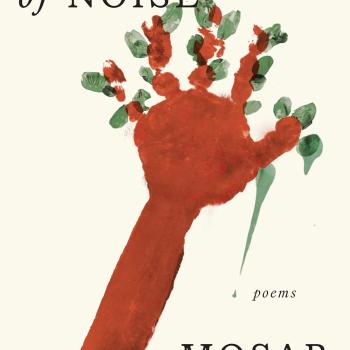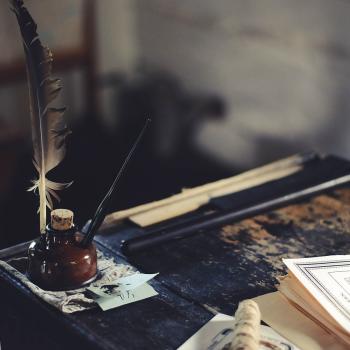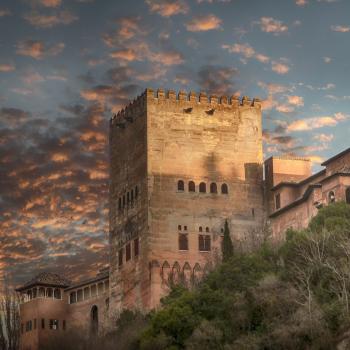Today marks the beginning of the pride season all over the world, and many are celebrating a month during which diversity and freedom are the most important things. However, many LGBT+ people in the Arabic world are afraid of being outed for the harsh laws regarding homosexuality, some of them even punishing it by death. Interestingly, this wasn’t always the case, and there are even historical and mythological examples that could empower the practice of any queer Arabic witch. I had my doubts about finding much material before I started working on this article, but I found out it was not the case.
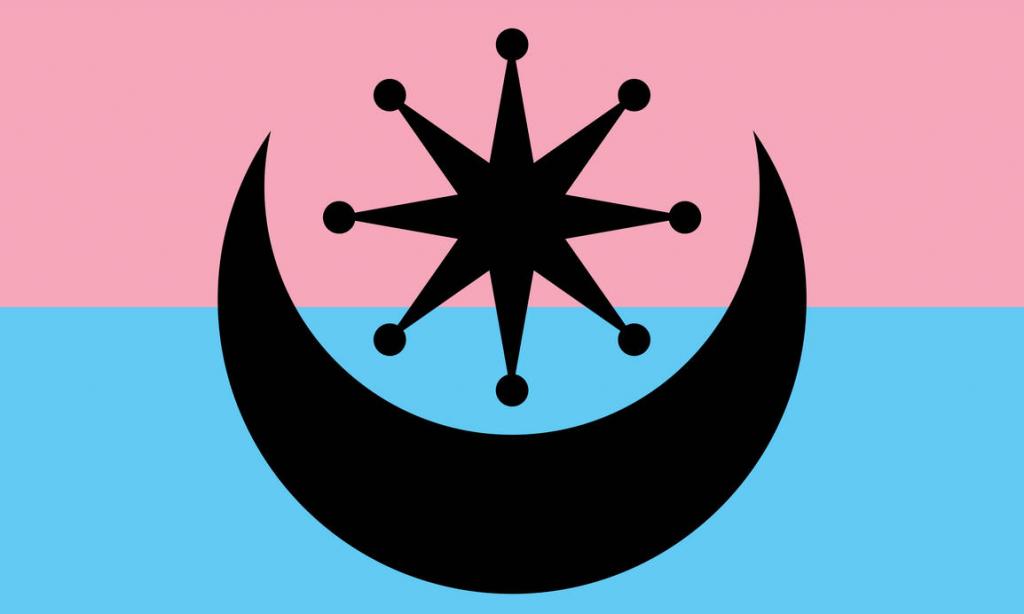
In his second book, Queer Magic: LGBT+ Spirituality and Culture from Around the World, Tomás Prower speaks about the Goddesses I started this blog with: Manat, Al-Lat, and Al-‘Uzza, the Three Daughters of Allah, who he mentions had a female and transgender following. The Peacock Angel, Tawusê Melek is another deity connected to queer people, as mentioned by Storm Faerywolf in his interview with Mat Auryn.
Prower also mentions Mehmed the Conqueror, who married women thrice but also seemed to have an interest in young men, particularly Radu III of Wallachia, his favourite and hostage, and brother of the infamous Vlad the Impaler. When the Ottomans captured the Wallachian capital Târgoviște in and Mehmed II withdrew, he left Radu as ruler of Wallachia. Marios Philippides also said in The Siege and the Fall of Constantinople in 1453 that if there were young men condemned to death that Mehmed found attractive, he would spare their lives and they would be added to his seraglio, a sequestered living quarters used by wives and concubines in Ottoman times.
There is also the Khanith, a third gender in Oman, with a flag designed by an unknown person, consisting on a person assigned male at birth but with characteristics and behavior often described as feminine. For those of you interested in this figure, Brian Whitaker speaks extensively about the role of the Khanith in his article Transgender issues in the Middle East: A history of ambiguity.
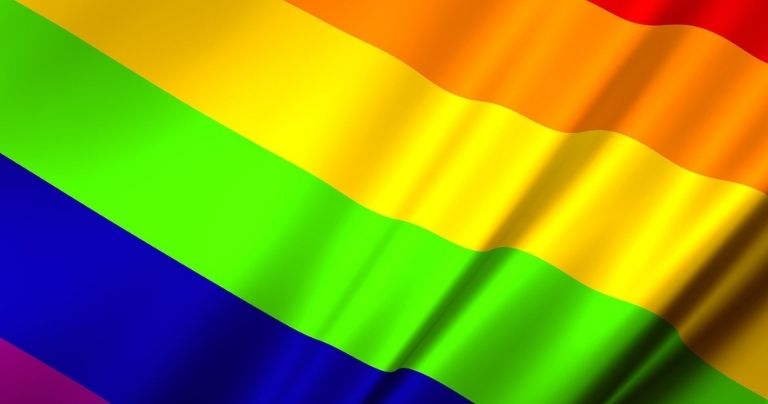
It also seems possible that there were three genders in Egypt. Mark Brustman, also known as Faris Malik, writes about The Third Gender in Ancient Egypt in his website Born Eunuchs:
Inscribed pottery shards discovered near ancient Thebes (now Luxor, Egypt), and dating from the Middle Kingdom (2000-1800 BCE), contain a listing of three genders of humanity: males, eunuchs, and females, in that order. (See Sethe, Kurt, “Die Aechtung feindlicher Fürsten, Völker und Dinge auf altägyptischen Tongefäßscherben des mittleren Reiches,” in: Abhandlungen der Preussischen Akademie der Wissenschaften, Philosophisch-Historische Klasse, 1926, p. 61.) The word for male includes a picture of a penis and a picture of a man kneeling. The word for eunuch includes a picture of a man kneeling, but not a picture of a penis. The word for female includes a picture of a woman kneeling, but no picture of body parts (unless the shield-like shape which designates “woman” is a picture of the female pubic region).
The pronunciation of the words on the shards is given as tai (tie), sht (sekhet) and hmt (hemet), respectively. The word for eunuch here, sht, also appears in a pyramid text where it is contrasted with the word for male, tai. There is not much evidence, if any, for castration of living human beings in ancient Egypt. [See my translation of Frans Jonckheere’s 1954 article attempting to find such evidence, I think unsuccessfully.] One can assume in the absence of contrary evidence that eunuchs in ancient Egypt were anatomically whole, natural eunuchs such as are found elsewhere throughout the ancient world.
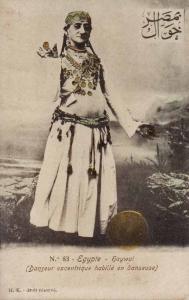
We also have the Egyptian khawal, also known as gawwal in other Arabic countries, who was a male dressed in masculine and feminine clothes in the 19th century who entertained the public in the streets and also performed during parties, weddings, ceremonies, and others. Some men even found their ambiguity seductive, and they were considered as sexually available. Nowadays, however, the term is derogatory slang for passive gay men, similarly to how the term mukhannathun, the effeminate ones, is used today.
The connection with arts and entertainment doesn’t end here. Abu Nuwas was one of the most respected poets, and he wrote extensively about gay love under the protection of Caliph Harun al-Rashid. Some of his poems were translated and edited by Jaafar Abu Tarab in Carousing with Gazelles: Homoerotic Songs of Old Baghdad. We can also speak about Harun al-Rashid’s son, Caliph Al-Amin, who wasn’t interested in women generally speaking, but preferred eunuchs, according to Samar Habib in her Islam and Homosexuality. Khaled El-Rouayheb also wrote about homosexuality in the Muslim world in Before Homosexuality in the Arab-Islamic World, 1500-1800.
Afsaneh Najmabadi explains in Women with Mustaches and Men without Beards: Gender and Sexual Anxieties of Iranian Modernity that young men without facial hair were considered beautiful and older men would pursue them. Sexual relationships between both were common in Iran until the nineteenth century after Europeans visited the country and claimed such relationships were immoral, an opinion endorsed by the following totalitarian governments in the Arabic world by fundamentalist Muslims, as claimed by Shereen El Feki in The Arab Bed Spring? Sexual rights in troubled times across the Middle East and North Africa.
Finally, I cannot not mention Jalāl ad-Dīn Mohammad Rūmī, better known as Rumi, who has been the subject of long speculation since there is no clear proof that he and Shams Tabrizi were lovers. Kittredge Cherry, by QSpirit, wrote an incredible article with lots of resources to go deeper in the matter and included quotes Rumi’s poetry to illustrate some points. I enjoyed reading Rumi: Poet and Sufi mystic inspired by same-sex love and got a few new books to my to-read list. I encourage you to do the same.
There are a few projects and organizations that could be of your interest: I Am Not Haraam, a Tumblr blog with several resources listed, and Rainbow Street, a non-governmental organization that helps LGBT people in the Middle East and North Africa. If there are more resources that you would like me to include, let me know, and I will do it right away.
The Arabic world is certainly an interesting place to examine, but LGBT+ issues are a big concern for many of us. There is much work to be done, it went backwards after the 19th century, but there’s still hope. Iraq, Israel, Jordan, and Lebanon are the most queer-friendly countries in the Arabic world, with slow but continual progress, and I am sure it is a matter of time before we can mention more.



